Wild Yam, Yam Root, Colic Root, Whorled Wild Yam - Dioscorea villosa
|
Dioscorea villosa - Wild Yam, Yam Root, Colic Root, Whorled Wild Yam. Dioscorea - yam - is a large genus worldwide with about 600 species, but only 6 are known in North America, with all of them found in the eastern half of the United States, with only one, the native D. villosa found as far north as Canada. D. villosa has the widest distribution, followed closely by the non-native D. polystachya (syn. D. oppositifolia). Some consider the widely dispersed D. quaternata to be a separate species (Whorled Wild Yam), but most authorities now consider it to be synonymous with the highly variable D. villosa; a number of other variants that have been considered separate species in the past are now considered within D. villosa. D. polystachya has halbard-shaped leaves, rather than the ovate leaves of D. villosa. The other ovate-leaved Dioscorea within the range of D. villosa is D. floridana, but D. floridana is not found in the Great Smoky Mountains National Park or in Georgia where the Georgia photos on this page were taken. D. floridana also has only alternate leaves, whereas the lower leaves of D. villosa may be alternate, opposite, or in whorls of 3 to 7 leaves. The upper leaves of both species are alternate.
Dioscorea can be confused with Smilax. Dioscorea leaves have 7 to 13 main veins, while Smilax have 3 to 5 main veins.
Found in:
AL, AR, CT, DC, DE, FL, GA, IA, IL, IN, KS, KY, LA, MA, MD, MI, MN, MO, MS, NC, NE, NJ, NY, OH, OK, PA, RI, SC, TN, TX, VA, WI, WV, GS
Leave comments on Dioscorea villosa at this link. | 
Distribution of Dioscorea villosa in the United States and Canada:
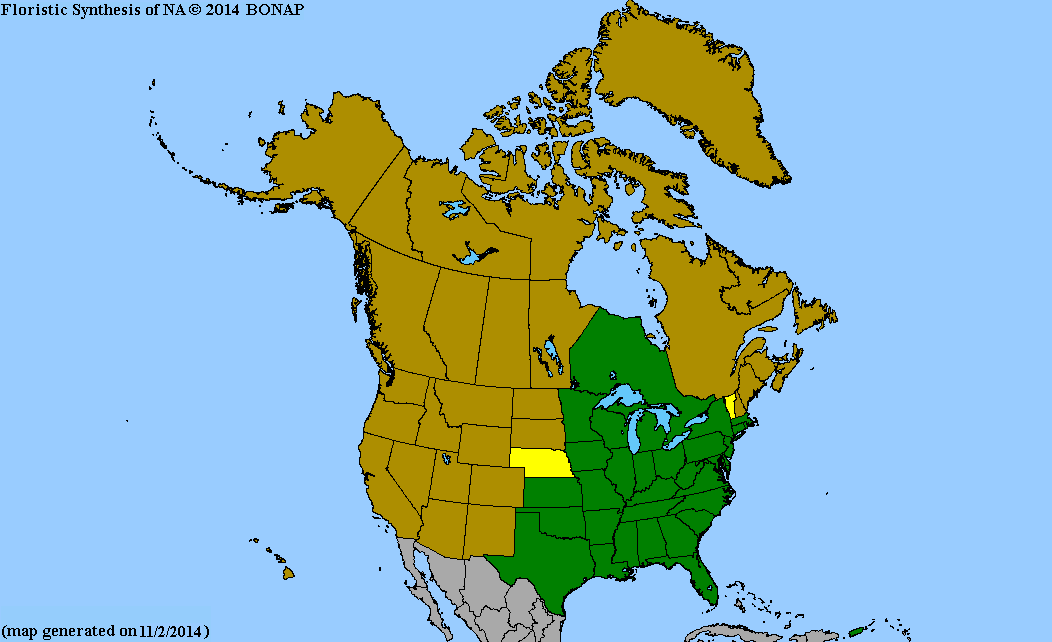
Map courtesy of The Biota of North America Program.
Map color key
Search Our Database: Enter any portion of the Scientific, Common Name, or both.
Do a general Google search of the entire site:
#ad
 Follow USWildflowers on Twitter
#ad
| | Site: GSMNP, Chestnut Top Trail, Blount County, TN Date: 2015-May-06 | Photographer: Gerald C. Williamson
Nikon D7000
Tamron SP 90MM f/2.8 AF Macro | | The lower (proximal) leaves of Wild Yam - Dioscorea villosa - may be whorled "due to suppression of proximal inter-nodes (esp. in woodland understory)" - per Flora of North America. Since the flowers are so tiny, this whorl of leaves may be the most distinguishing feature of the plant at first glance. | | 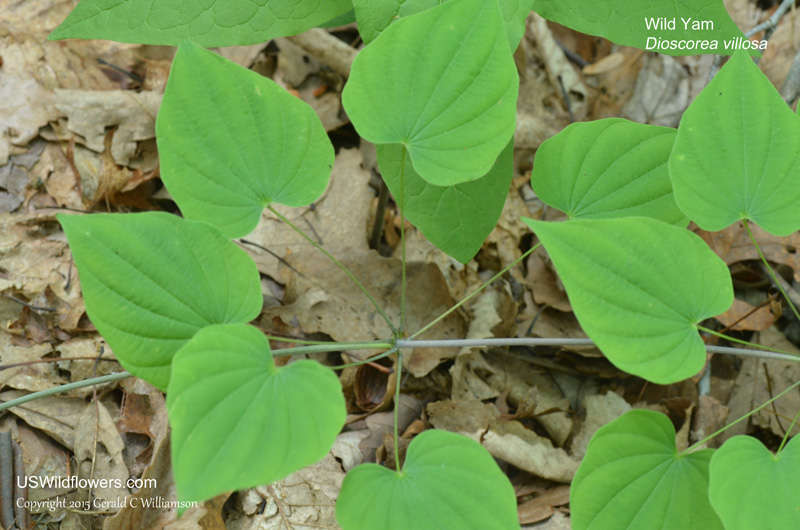
| | Site: GSMNP, Chestnut Top Trail, Blount County, TN Date: 2015-May-06 | Photographer: Gerald C Williamson
Nikon D7000 | | The inflorescence of Wild Yam grows from the axils of the leaves - a single inflorescence per leaf. The inflorescence may be branched, as shown here, with each branch subtended by a small bract. The flowers are green to greenish-white, and have 6 petals. The plants are dioecious - it will have only male flowers, or only female flowers. | | Click on the photo for a larger image
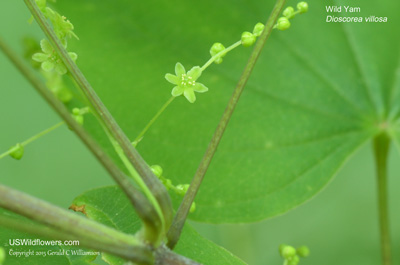
| | Site: Murray County, GA Date: 2014-May-15 | Photographer: Cindy Williamson
Nikon D5100 | | Based on the color of the flowers - orangish yellow rather than green or greenish white, and the fact that no leaf whorls are visible in this photo, this may be Dioscorea floridana rather than Dioscorea villosa. However, I was unable to find records of D. floridana being known in Murray County, Georgia. I did find whorled plants within a mile or so of this location, but don't recall the leaf formation of this particular colony. | | Click on the photo for a larger image
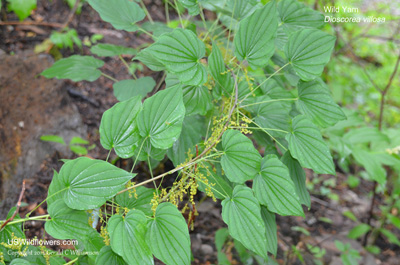
| | Site: GSMNP, Chestnut Top Trail, Blount County, TN Date: 2015-May-06 | Photographer: Gerald C Williamson
Nikon D7000 | | Dioscorea are vines, growing up to 20 or even 30 feet long. The leaves have cordate (heart shaped) bases, and from 7 to 13 main veins, each starting at the base of the leaf. | | Click on the photo for a larger image
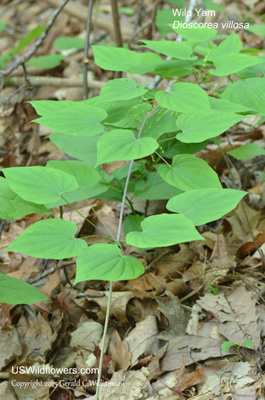
| | Site: Murray County, GA Date: 2014-May-15 | Photographer: Gerald C Williamson
Nikon D7000 | | Dioscorea seed capsules are winged. They will become a greenish-gold color; this photo is very early in their development, as indicated by the remains of the flower on most capsules. | | Click on the photo for a larger image
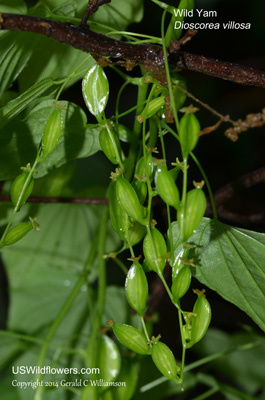
|
References used for identification and information:
|
|
| |
| #ad
|
|







